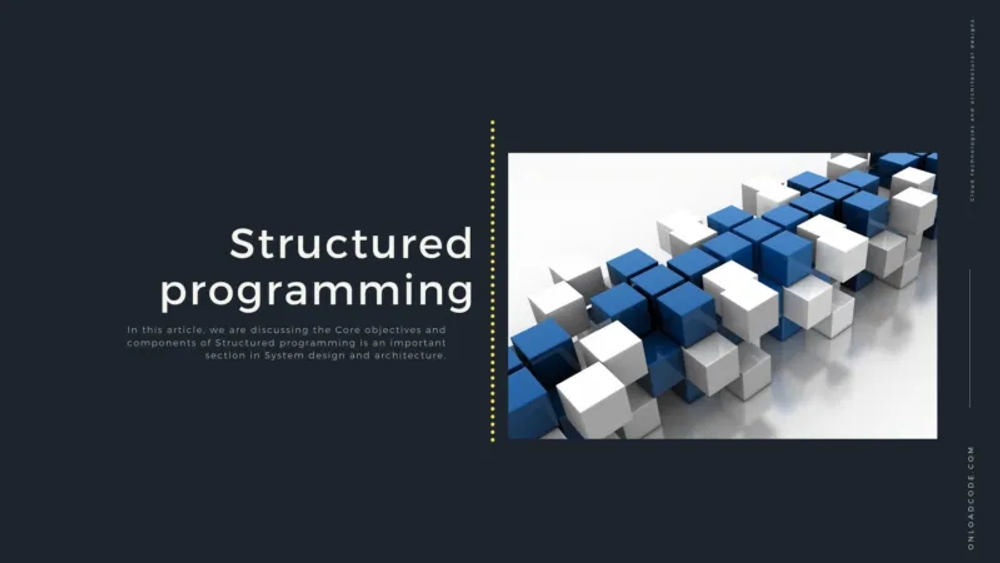Published
- 3 min read
Structured Programming

What is Structured Programming
Structured programming is a programming model that facilitates the creation of programs with readable code and reusable components. All modern programming languages support structured programming, but the support mechanisms vary, as do the syntax of programming languages.
When a module or element can be reused from a codebase, it is also possible to create structured code using modules written in different languages. As long as it conforms to a common module interface or application program interface (API) specifications. However, when the module is reused, it may compromise data security and control. Hence, it is very important to define and enforce a privacy policy that governs the use of the module.
Structured programming encourages an application program to be divided into a hierarchy of modules or autonomous elements. These elements may contain other such elements. Within each element, the code can further be structured by using relevant logic components designed to improve readability and maintainability. This may include the case of testing a variable against a set of values or creating continuous loops until a condition is met. In all structured programming languages, the unconditional transfer of control or “Goto Declaration” is invalid and unavailable.
Types of Structured Programming
- Service-based programming defines reusable modules as “services” with advertised interfaces.
- Microservices programming focuses on creating modules that do not store data internally, making them scalable and resistant to cloud deployment.
- Functional programming ensures that modules are written as functions, with outputs derived only from inputs. This design aligns with serverless computing and coincides with microservices principles.
- Object-oriented programming (OOP) defines a program as a set of command objects or resources. An OOP language processes commands by interacting with objects.
- Model-based programming links database query languages with database entries, triggering updates or activations when steps occur. Examples include inverse Polish notation (RPN) and quantum computer programming.
Components of Structured Programming
Structured programs consist of a hierarchy that begins with the main process and decomposes into lower-level modules. These lower structures may:
- Call other (lower-level) modules.
- Include blocks representing structural conditions or action combinations.
Modules can either reside as a single code unit or be split into multiple modules stored in libraries.
Modules are typically classified as:
- Procedures: Coding units performing specific functions, often referencing external data.
- Functions: Coding units that execute specific inputs and return outputs.
Advantages of Structured Programming
- Encourages top-down activation, improving code readability and maintenance.
- Promotes code reuse by enabling independent modules.
- Enhances development time and code quality.
- Offers:
- User-friendly designs.
- Easy-to-read and maintain code.
- Machine-independent implementation.
Disadvantages of Structured Programming
- Lack of implementation efficiency due to system resource management during module calls.
- Risk of over-structuring, leading to efficiency loss.
- Machine independence requires transformation time.
- Dependency on variable factors like data types.
- Development time may increase with the language used.
Difference Between Structured and Non-Structured Programming Languages
Structured programming languages facilitate well-organized programming, enabling the creation of clear and reusable code. In contrast, non-structured programming may:
- Lack structure enforcement mechanisms.
- Include “Goto” statements leading to less organized code.
Modern programming languages generally support structured code generation while also accommodating less structured approaches if misused.
Conclusion
Thanks for reading the article Structured Programming as an essential component in System Design and Architecture.
Originally published at onloadcode.com on December 22, 2020.
